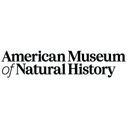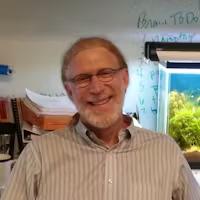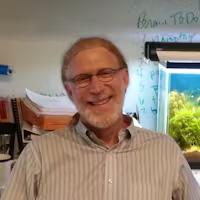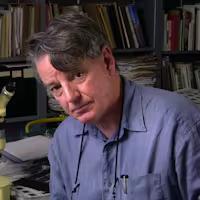Learn about evolutionary relationships, population genetics, and natural selection to enhance your teaching of evolutionary science.
Learn about evolutionary relationships, population genetics, and natural selection to enhance your teaching of evolutionary science.
This course, offered by the American Museum of Natural History, explores evolutionary science and its integration into the classroom. Participants will learn about evolutionary relationships, population genetics, and natural and artificial selection. The course covers Charles Darwin's revolutionary concepts, including the "tree of life" and adaptation via natural selection. It also delves into the history of life, human evolution, and strategies for teaching evolution in culturally diverse classrooms. Through expert-led lectures, behind-the-scenes looks at museum collections, and practical teaching resources, educators will gain a comprehensive understanding of evolutionary science and effective methods to incorporate it into their teaching.
4.7
(322 ratings)
27,553 already enrolled
Instructors:
English
پښتو, বাংলা, اردو, 4 more
What you'll learn
Understand Charles Darwin's concepts of the "tree of life" and natural selection
Explore the processes of speciation and adaptation in evolutionary biology
Learn how to construct and interpret phylogenetic trees
Examine the history of life on Earth, including major extinction events
Investigate human evolution and our species' place in the tree of life
Develop strategies for teaching evolution in diverse classroom settings
Skills you'll gain
This course includes:
228 Minutes PreRecorded video
4 assignments, 1 quiz
Access on Mobile, Tablet, Desktop
FullTime access
Shareable certificate
Closed caption
Get a Completion Certificate
Share your certificate with prospective employers and your professional network on LinkedIn.
Created by
Provided by

Top companies offer this course to their employees
Top companies provide this course to enhance their employees' skills, ensuring they excel in handling complex projects and drive organizational success.





There are 6 modules in this course
This course provides a comprehensive exploration of evolutionary science designed specifically for educators. It covers key concepts such as Charles Darwin's "tree of life," speciation, natural selection, and the history of life on Earth. Participants will learn about the latest research in evolutionary biology, including human evolution and the role of extinction in shaping life's diversity. The course also addresses practical aspects of teaching evolution, including strategies for addressing student misconceptions and integrating evolutionary concepts into various educational settings. Through a combination of expert lectures, behind-the-scenes museum tours, and practical teaching resources, educators will gain both content knowledge and pedagogical strategies to effectively teach evolutionary science.
Course Introduction
Module 1 · 32 Minutes to complete
Introduction and Darwin's First Great Idea - The Tree of Life
Module 2 · 2 Hours to complete
Darwin's Second Great Idea - Adaptation via Natural Selection
Module 3 · 3 Hours to complete
The History of Life
Module 4 · 1 Hours to complete
Human Evolution
Module 5 · 1 Hours to complete
Course Conclusion
Module 6 · 31 Minutes to complete
Fee Structure
Payment options
Financial Aid
Instructors
Assistant Director, Curriculum and Instruction for Online Teacher Education Programs; Faculty, Master of Arts in Teaching, Richard Gilder Graduate School
Dr. David Randle joined the American Museum of Natural History’s Education Department after a 15-year career as a science teacher in the New York City public schools. He is currently the Assistant Director of Curriculum and Instruction and works on programs for teachers though Seminars on Science, the Museum’s online graduate level professional development program, and in face-to-face programs through the Museum’s Gottesman Center for Science Teaching and Learning.
Chair and Lamont Curator
Dr. Cracraft’s research on the systematics and evolution of birds, speciation analysis, and biogeography are all components of his interests in understanding how biotas originate and change over time, and how one understands patterns and processes of diversification. A major research effort in his laboratory involves a detailed description of one of the most spectacular examples of "adaptive radiation": the birds of paradise (Paradisaeidae) of New Guinea and surrounding areas. A second major research project involving his research group is contributing to building the avian Tree of Life. The focus of this research is on the phylogenetic history of the songbirds, which comprise about 60% of all living birds. A related research effort is being put into the analysis of speciation and biogeography of various birds. He and his students have undertaken research on numerous groups of birds in most areas of the world, particularly Latin America and Australasia. Dr. Cracraft has also undertaken research contributing to conservation biology. He and coworkers have published several papers on species concepts and their implications for conservation, and have conducted a genetic study of species limits in tigers. He has also written extensively on biodiversity issues.
Testimonials
Testimonials and success stories are a testament to the quality of this program and its impact on your career and learning journey. Be the first to help others make an informed decision by sharing your review of the course.
Frequently asked questions
Below are some of the most commonly asked questions about this course. We aim to provide clear and concise answers to help you better understand the course content, structure, and any other relevant information. If you have any additional questions or if your question is not listed here, please don't hesitate to reach out to our support team for further assistance.





